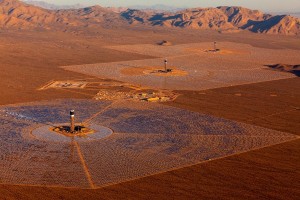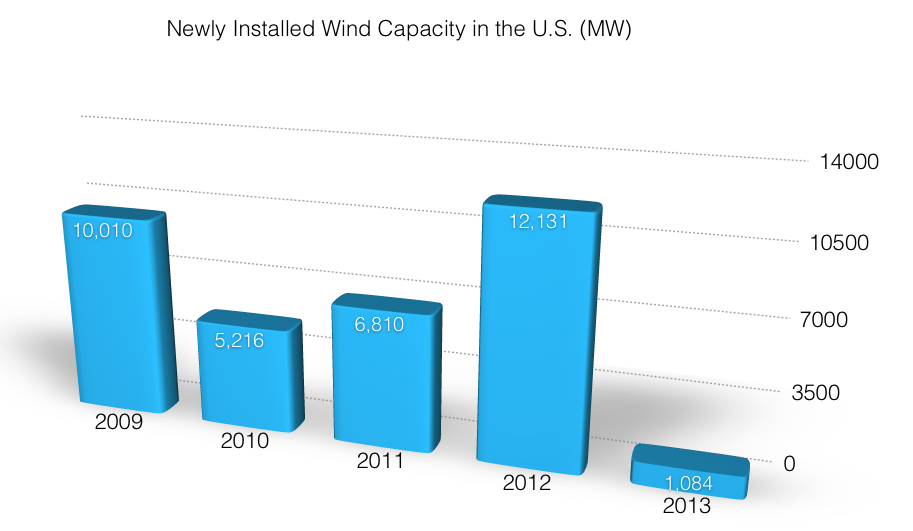In a series of posts about shale gas back in January, I made the point that one of effects of the increase in gas production in the United States was to suppress the price of natural gas and make it more difficult for utility scale wind and solar energy to compete with natural gas.
Last week, the New York Times ran a story which cited a report by Lazard released this September which has made me re-think my position. While the Lazard report is a bit technical, the bottom line from both is that depending on the location and the level of currently available subsidies in place, the price of wind energy and solar energy has dropped by 50% or more in the last few years through a combination of engineering, financing, and better operations.
According to Lazard, subsidies continue to play an “important” role but even without them renwables are competitive in certain parts of the country where the sun shines and the wind blows.
The basic narrative is that since Shale Gas has emerged as a major contributor to the production of natural gas in the United states it has depressed prices and put tremendous pressure on competing technologies such as Wind. Uncertainty over whether the federal government would continue to provide incentives combined with lower cost gas killed the business in 2013 as shown in data from the Wind Energy Foundation.
What we teach in business school is that faced with competition, firms will either react through innovating better ways of doing things or disappear and according to the data from Lazard, the wind and solar industries have reacted with their levelized cost of energy, a way of comparing the different technologies, dropping by 58% and 78% respectfully over the last five years.
What’s new?
While wind generators are evolving into taller, larger diameter structures with better software and mechanical systems, the innovation on the solar side is much broader and it seems that a technological paradigm, that is an essentially similar approach, has yet to emerge. Below are some interesting examples:
 Parabolic Troughs: IESE alum Bill Hargett works for SkyFuel which builds enormous arrays of long parabolic mirrors which heat up a fluid which can then boil water to drive steam turbines. The first parabolic troughs were built more than 25 years ago and the technology is well proven and reliable. Key advantages are that it is inherently modular and scalable. The more power you need, the more mirrors you build. SkyFuel also has developed a desalination plant and has a system operating in California in which a heat pump runs the desalination system.
Parabolic Troughs: IESE alum Bill Hargett works for SkyFuel which builds enormous arrays of long parabolic mirrors which heat up a fluid which can then boil water to drive steam turbines. The first parabolic troughs were built more than 25 years ago and the technology is well proven and reliable. Key advantages are that it is inherently modular and scalable. The more power you need, the more mirrors you build. SkyFuel also has developed a desalination plant and has a system operating in California in which a heat pump runs the desalination system.
 Towers: Tower technology is an alternative way of building concentrated solar power (CSP) and is based on building large arrays of mirrors which all shine on one point, located at the top of a tower, which heats water or another fluid which can then generate steam to drive turbines to make electricity. Small scale units are already operating in California and others are being built around the world. Another IESE alum, Thierry Dulong runs the renewable power unit at Altsom and is building a 121 Megawatt facility in the Negev desert in Israel called Ashalim together with BrightSource, a U.S. company that makes the mirrors and in which Alstom has invested.
Towers: Tower technology is an alternative way of building concentrated solar power (CSP) and is based on building large arrays of mirrors which all shine on one point, located at the top of a tower, which heats water or another fluid which can then generate steam to drive turbines to make electricity. Small scale units are already operating in California and others are being built around the world. Another IESE alum, Thierry Dulong runs the renewable power unit at Altsom and is building a 121 Megawatt facility in the Negev desert in Israel called Ashalim together with BrightSource, a U.S. company that makes the mirrors and in which Alstom has invested.
The Future
While it might be surprising to be writing about the future of renewable energy at a moment when oil and gas prices are at historically low levels, it appears that the low price will simply push the renewable industry to think better and come up with more innovative ways to harness the wind, the sun, and the seas. When the oil price rises, and it will, these technologies will be ready.



